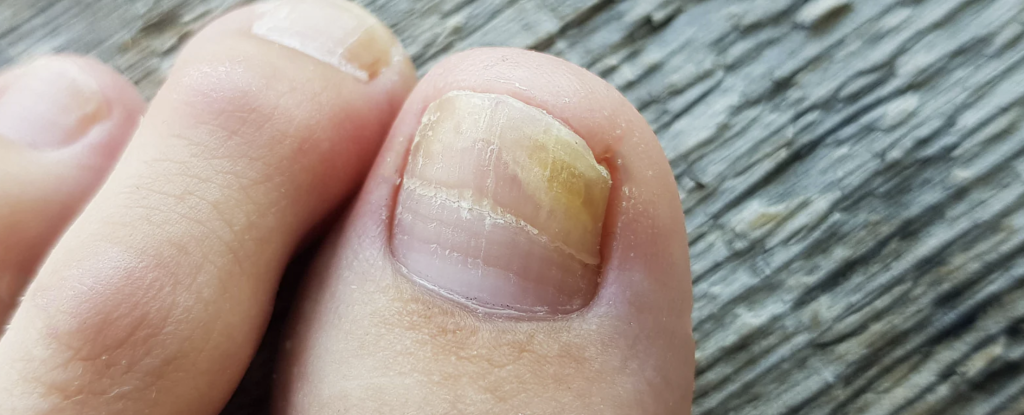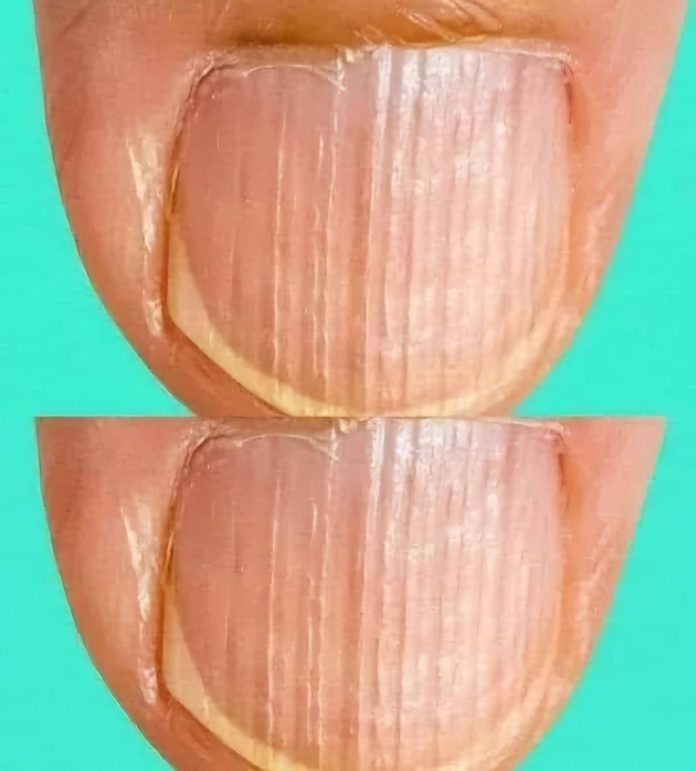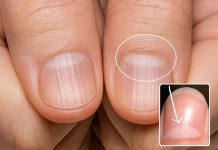Our nails do more than just enhance the beauty of our hands; they can serve as indicators of our overall health. Changes in the color, texture, or shape of your fingernails could be early signs of underlying medical conditions. While some nail changes are harmless, others may point to serious health concerns that require medical attention. Here are seven common fingernail conditions and what they might reveal about your well-being.
1. Brittle or Cracked Nails
Brittle nails, also known as onychoschizia, can easily break, split, or peel. This condition is often caused by frequent exposure to water, harsh chemicals, or dry environments. However, brittle nails may also indicate an underlying health issue such as iron deficiency, hypothyroidism, or a lack of essential nutrients like biotin and vitamin E. If your nails are constantly weak and breaking, consider improving your diet, staying hydrated, and using hand moisturizers to protect them.

2. White Spots on Nails
White spots (leukonychia) are a common occurrence and are usually harmless. They can result from minor trauma to the nail bed, such as banging your nails against a hard surface. However, persistent white spots may indicate a zinc or calcium deficiency. In rare cases, they can be associated with fungal infections or allergic reactions to nail products. If you notice frequent white spots without an apparent cause, consult a doctor to rule out potential nutritional deficiencies.
3. Yellow Nails
Yellowing nails can occur due to aging, excessive use of nail polish, or smoking. However, persistent yellow nails may be a sign of an underlying health issue such as fungal infections, diabetes, or respiratory diseases like chronic bronchitis. Yellow Nail Syndrome (YNS) is a rare condition where nails become thick, yellow, and slow-growing, often accompanied by respiratory issues and lymphedema. If your nails remain yellow despite treatment, seek medical advice.
4. Pale or White Nails
Pale nails can be a sign of anemia, a condition caused by low red blood cell count, which results in reduced oxygen supply to tissues. Other potential causes include liver disease, malnutrition, and congestive heart failure. If your nails appear unnaturally pale, along with symptoms like fatigue and dizziness, it may be a good idea to get your blood levels checked by a healthcare professional.
5. Dark Lines or Black Streaks
Dark streaks or black lines under the nails can sometimes result from minor trauma, such as slamming your finger in a door. However, if these streaks appear suddenly, expand, or do not go away, they may indicate a more serious condition like melanoma, a type of skin cancer. If you notice an unusual black or brown streak on your nail that doesn’t fade, seek medical attention immediately.
6. Clubbing of Nails
Nail clubbing occurs when the fingertips become enlarged, and the nails curve around them. This condition is often linked to low oxygen levels in the blood and can be a sign of lung disease, heart disease, or liver disorders. If you experience sudden nail clubbing, consult a healthcare provider as it could be a symptom of a serious underlying condition.
7. Spoon-Shaped Nails (Koilonychia)
Koilonychia refers to nails that appear concave or spoon-shaped, often able to hold a drop of water on their surface. This condition is commonly associated with iron deficiency anemia, hemochromatosis (a disorder where the body absorbs too much iron), or certain autoimmune diseases. If your nails are noticeably spoon-shaped, it may be beneficial to have your iron levels checked.

How to Maintain Healthy Nails
Keeping your nails healthy requires proper care and attention. Here are some simple tips to maintain strong and healthy nails:
- Eat a Balanced Diet: Include foods rich in vitamins and minerals such as biotin, iron, zinc, and vitamin E.
- Stay Hydrated: Drink plenty of water to prevent dryness and brittleness.
- Avoid Harsh Chemicals: Limit exposure to nail polish removers with acetone and use gloves when handling cleaning products.
- Moisturize Regularly: Apply hand cream and cuticle oil to keep your nails hydrated.
- Trim and File Properly: Keep nails trimmed and filed to prevent breakage and damage.
When to See a Doctor
While many nail conditions are harmless and can be managed with proper care, persistent or sudden changes in your nails should not be ignored. If you notice unusual nail discoloration, changes in shape or texture, or signs of infection, consult a healthcare professional for further evaluation.
Your nails can serve as a window into your overall health, offering clues about potential deficiencies or illnesses. By paying attention to these subtle signs, you can take proactive steps to maintain both your nail health and your overall well-being.

















